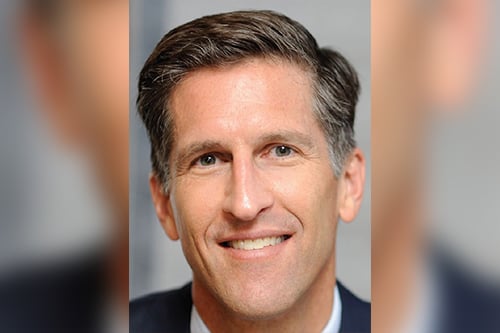

With the acceleration of digital business models, amplified significantly by the COVID-19 pandemic, intangible assets are becoming ever more valuable to businesses around the world. A recent Lloyd’s of London report suggested that intangible assets – the top three being: reputation/brand, human capital, and intellectual property – already account for as much as 85% of the total business value in some industries, and, with the pandemic, that value could quickly increase further.
In August, the specialist insurance and reinsurance market published a report in collaboration with KPMG, titled ‘Protecting intangible assets: Preparing for a new reality,’ in which they urge businesses to pay attention to the new risk landscape that has evolved under COVID-19, and to factor intangible assets into their risk models.
“This intangible report was an attempt to take a look at how the world has pivoted,” commented Lloyd’s regional MD and president Hank Watkins. “We all know that 20-years-ago, a lot of the value of companies was built around their physical assets – what they actually produced and sold – and that’s transitioned relatively quickly in recent years to almost 85% of some companies’ values being built around intangibles. I think this report is very timely. It offers ways that we can all manage these new risks a little bit better, and it shows some opportunities that the Lloyd’s market has taken to provide coverage for those new risks going forward.”
With unprecedented scrutiny on firms’ behaviour, reputational issues are just one of many posing a threat to firms’ resilience during the pandemic. New ways of working are also presenting their own unique challenges, amplifying the complexity of managing intellectual property and conduct risk among a remote workforce. For businesses to stay resilient, both operationally and financially, awareness of what intangible assets are and how they can be protected is critical and must form a considerable part of their risk management strategy.
The insurance industry has “tried” to keep up with the rapid evolution of intangible assets, according to Watkins. He explained: “There have been a number of attempts, for example with reputational risk, by insurers, brokers and think tanks to somehow quantify what damage to reputation is, and what that means in terms of stock value diminution. The challenge of measuring that impact has been really difficult for insurance companies. There’s still a long way to go in our industry to truly measure what the ultimate impact is on a public company’s stock, for example, or a private company’s reputation that actually leads to loss of value. That’s an ongoing aspiration for the industry right now – but I definitely see reputation risk as a solution coming together more quickly than it has in the past.”
There are numerous insurance products available to help companies manage their human capital risk – arguably the “biggest asset of any organisation,” according to Watkins. Products like accident and health (A&H) insurance and kidnap and ransom (K&R) insurance have been around for a long time and have been key considerations for organisations around the world. But the COVID-19 pandemic has changed how we work. With more people connecting virtually and working in a remote environment, companies are now scrambling to figure out where problems might occur with their employees and how those problems could manifest into a loss, either of those employees as an asset, or in terms of reputational damage for the company.
“In terms of intellectual property, there’s been insurance coverage out there for years to protect companies and defend them against allegations of patent infringement, for example,” Watkins told Insurance Business. “There’s also coverage out there to enable firms to pursue claims against people who’ve infringed against them – and those products have been available for the last 10 to 15 years. However, I still see intellectual property risk – especially in this remote working environment – as a real challenge, as far as identifying what the exposures are and then ultimately providing coverage if it’s needed.”
Protecting intellectual property will only become more challenging as more employees opt to work remotely beyond the coronavirus pandemic. While companies are working hard to shore up their cybersecurity and protect access to their networks, cyber criminals are seemingly always one step ahead, and they will always find ways to compromise people, which could potentially put a company’s reputation, human capital and intellectual property at risk. These are all things that brokers and agents need to be aware off, Watkins added.
“So many of the agents and brokers in our world - I’m talking about those who’ve been in the business 30 or 40 years - have grown up protecting stuff or things,” said Watkins. “As cyber became an increasingly challenging risk in the mid-90s, that’s when insurance brokers and insurance companies started identifying cyber exposures and putting together coverage. At that time, it was very expensive, very hard to get, and applications were really onerous, but fast-forward to today and cyber coverage is widely available. All brokers and agents need to be as in-tune with the cyber exposures of their clients as they are with flood risk, earthquake and other [more traditional perils]. It’s a real challenge for traditional insurance agents to keep up with what’s going on around them.
“I would also, by the same token, say that for young people entering our industry, there’s never been a more exciting time. These students coming out of university risk management programmes or straight from high school have such a firm grasp on how social media can impact reputations because they’ve probably all grown up concerned about how Facebook might impact their own personal reputation. You expand that to the industries they’re working to protect, and you’ve got people who, from firsthand knowledge, really understand how things can go sideways. And from there, they can develop, with the support of insurance companies, actual risk mitigation and coverage for the future. So, it’s an exciting time to be in our business.”
